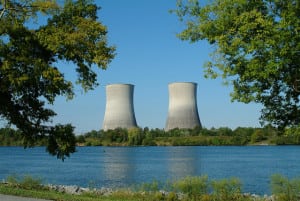It’s Official: Watts Bar Unit 2 Begins Commercial Operation
Tennessee Valley Authority (TVA) announced that Watts Bar Unit 2 began commercial operation on October 19. After successfully completing its power ascension testing program and operating at 100% power output for more than three weeks, the 1,150-MW reactor is providing carbon-free electricity to consumers in its seven-state service territory the company said.
Watts Bar Unit 2, situated 60 miles southwest of Knoxville, Tenn., becomes the 100th reactor operating in the U.S. The national total not so long ago was 104 operating units, but the changing economics of power generation have been primarily responsible for recent shutdowns and announced shutdowns. The 1,150-MW Watts Bar Unit 1 began operating in 1996 and is licensed through 2035.

A Long and Rocky Path to Completion
In August, a transformer fire delayed power ascension testing and was the last of several challenges faced by the project, which initially broke ground in 1973. Lower demand for electricity halted construction in 1985.
Over the years, some of the partially completed unit’s equipment was repurposed for other projects. When work on Unit 2 resumed in 2008, some delays were to be expected, but others were not, as POWER reported in December 2013, when the construction permit was extended yet again. At that point, the project was on track for completion in December 2015.
In addition to schedule slippage, cost overruns have dogged the project. In 2007 the estimated cost was $2.49 billion. In April 2012, that estimate was doubled. In February this year, the Chattanooga Times Free Press reported that the final cost for the second unit rose by $200 million for a total of $4.7 billion.
Carbon-Free Power
Nuclear energy facilities in 30 states generate 19% of the U.S. total and nearly 63% of its carbon-free electricity. Based on the historic capacity factors of the respective power sources, TVA claims Watts Bar Unit 2 will generate electricity equal to one-third of the production from all wind turbines installed in the U.S. in 2015, around-the-clock. “From a clean air standpoint, the Watts Bar power station will prevent the emission of approximately 15 million metric tons of carbon dioxide, equivalent to taking more than three million cars off the road,” the October 19 press release states.
TVA has a long-range goal to develop a cleaner portfolio of generation sources and a goal of “reducing CO2 emissions by 60 percent over 2005 levels within the next four years.” Putting Watts Bar Unit 2 online supports those goals.
The company says that the “two-unit plant combined will provide nearly 1,000 permanent jobs paying above-average wages and contribute an average $470 million in goods and services each year to the regional economy that will help drive the expansion of existing businesses and new business formation.”
“We’re in a hotbed for industrial growth and have been meeting with clients that are heavy industrial users of electricity,” said Dennis Tumlin, executive director of the Rhea (County) Economic & Tourism Council. “Watts Bar Unit 2 is a big plus for us in attracting new businesses because they value the additional, reliable power knowing we can meet their needs.”
“Thousands of men and women committed to completing Watts Bar Unit 2 safely and with high quality, and achieving commercial operations is a testament to their ability to deliver on that promise,” said Joe Grimes, TVA’s executive vice president of generation and chief nuclear officer.
“This is a historic day. At a time when our nation and the world are seeking cleaner sources of affordable, reliable energy, Watts Bar Unit 2 is poised to produce tremendous environmental and economic benefits for communities in the Tennessee Valley for decades to come,” said Marvin Fertel, the Nuclear Energy Institute’s president and chief executive officer. “On behalf of the nuclear energy industry, the Nuclear Energy Institute congratulates TVA and its supporting contractors and suppliers for this outstanding accomplishment.”
—Gail Reitenbach, PhD, editor (@GailReit, @POWERmagazine)